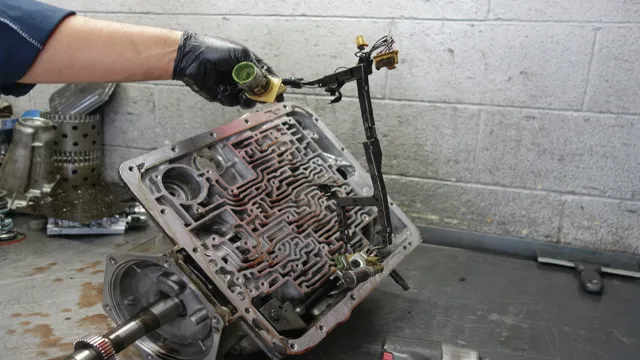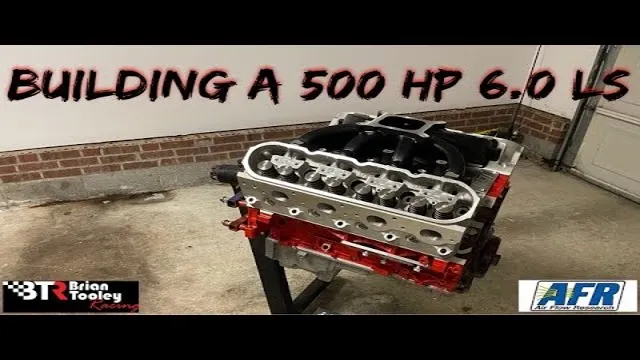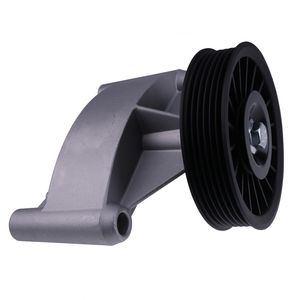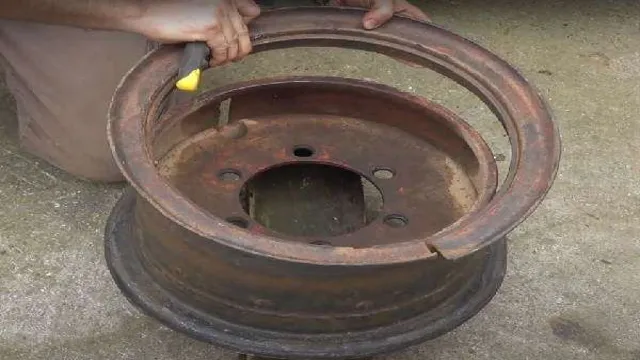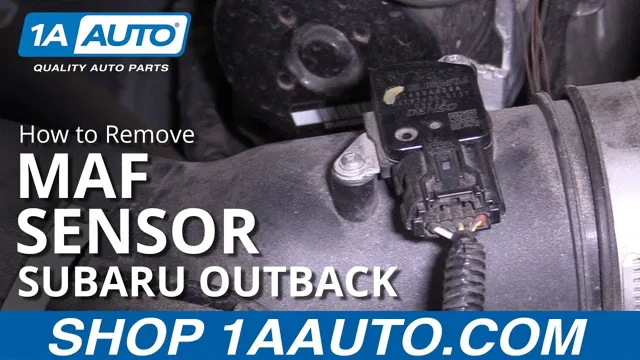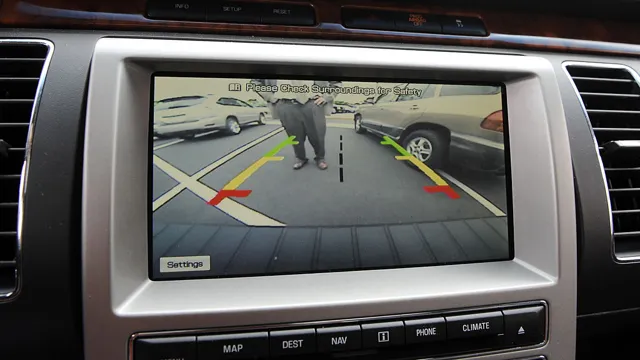Smooth Shifting: A Step-by-Step Guide to Breaking in a Rebuilt Transmission Like a Pro
Have you recently rebuilt your transmission and are wondering how to break it in? You’re not alone. Breaking in a rebuilt transmission is no easy feat, but the good news is that it can be done with the right approach and techniques. First of all, it’s important to understand why you need to break in your transmission after a rebuild.
When a transmission is rebuilt, there are new parts and components that need time to settle in and mesh properly. Failing to do so could result in premature wear and damage, which is the last thing you want after putting in all that hard work rebuilding it. To begin the process, start by driving your vehicle at moderate speeds for the first 500 miles.
Avoid towing anything heavy, driving off-road or idling for extended periods during this time. Gradually increase your speed as the miles pile on, but avoid doing any hard acceleration or slamming on the brakes. Another key tip is to change your transmission fluid and filter after the first 500 miles or so.
This will help flush out any debris or metal shavings that may have accumulated during the break-in period. One thing you should never do when breaking in a rebuilt transmission is to push it too hard too soon. This can cause premature failure and lead to costly repairs down the line.
Take your time, be patient and follow the guidelines laid out by your transmission builder. In conclusion, breaking in a rebuilt transmission requires a delicate balance of patience and care. By following the right techniques and avoiding common mistakes, you can ensure a long and trouble-free life for your transmission.
Determine if your transmission needs break-in
If you’ve recently had your transmission rebuilt, you may be wondering if it needs to go through a break-in period. While it’s not always required, it’s a good idea to follow a few simple steps to ensure your new transmission lasts as long as possible. First, avoid any sudden acceleration or hard braking for the first few hundred miles.
This allows the internal parts to mesh properly and wear in without any unnecessary stress. Second, make sure to change the fluid and filter after the break-in period to remove any metal particles from the wear-in process. Finally, pay close attention to any unusual noises or shifting behavior and have them checked by a professional if necessary.
By following these simple tips, you can help ensure a long and trouble-free life for your rebuilt transmission. So, if you’re wondering how to break in a rebuilt transmission, just remember to take it easy for the first few hundred miles and keep an eye on any potential problems.
Check manufacturer’s instructions for break-in period
When you buy a new transmission, it’s important to check the manufacturer’s instructions for the break-in period. Some transmissions require a certain amount of time to be driven before they reach optimal performance. During this time, it’s important to follow the guidelines set by the manufacturer to ensure that the transmission functions correctly in the long term.
Not following the guidelines could lead to premature wear and damage. If you’re unsure whether or not your transmission requires a break-in period, consult the instructions or reach out to the manufacturer for clarification. Remember, taking care of your transmission during the break-in period will help it perform better and last longer in the end.
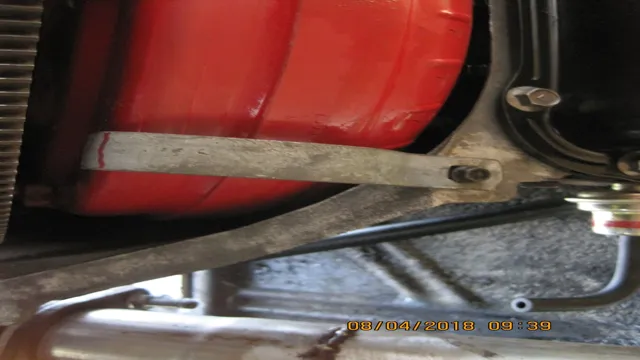
Listen for unusual noises or vibrations
If you’ve just had a new transmission installed in your vehicle, you’ll need to break it in before it’s fully functional. But how can you tell if it’s time to take your vehicle in for a break-in? One sign to listen out for is unusual noises or vibrations coming from your transmission. If you hear any strange sounds or feel any vibrations, this could indicate that your transmission needs a break-in period.
During this period, your transmission’s components will wear in and adjust to each other, ensuring maximum performance over time. Taking the time to break in your transmission can help you avoid costly repairs in the future, so be sure to pay attention to any signs that your transmission needs a break-in.
Breaking in a transmission with a manual gearbox
So you’ve just had your manual transmission rebuilt and you want to make sure it lasts as long as it possibly can. The key to doing that is to properly break in the transmission. First things first: don’t be too hard on the gearbox during the first 500 miles.
Avoid heavy acceleration and high speeds, especially when shifting gears. After the first 500 miles, you can start gradually increasing your speed and the force you apply when shifting gears. Just remember that the key is to let the transmission get used to its new parts gradually.
By the time you hit the 1,000 mile mark, you should be able to drive normally without any restrictions. Keep an eye out for any unusual noises or leaks during this period, as those could be signs that something isn’t right. If you notice anything unusual, take your car to a professional to get it checked out.
By following these steps, you can ensure that your rebuilt transmission will last for a long time.
Gradually increase your speed during first few hundred miles
Breaking in a transmission with a manual gearbox can take time, but it’s an important process to ensure the longevity of your vehicle. One key tip to remember is to gradually increase your speed during the first few hundred miles. This means not pushing your new vehicle to its limits right away.
Instead, you’ll want to take it easy and let the transmission settle in. Starting slow and gradually working your way up to faster speeds is the best way to break in your manual transmission. This not only allows the gears to properly mesh but also helps prevent unnecessary wear and tear on your transmission.
With time and patience, your transmission will break in and perform optimally for years to come.
Avoid sudden acceleration or hard braking
When it comes to breaking in a transmission with a manual gearbox, one of the essential things to consider is how you accelerate and brake. Avoid sudden acceleration or hard braking to ensure that your transmission is properly bedded-in. It’s essential to be gentle with the clutch pedal, especially during the first thousand miles of driving.
With each shift, make sure to take it slow and easy, giving your clutch and gearbox time to adjust. Abrupt shifting or revving too high during acceleration could cause damage to the transmission’s gears. It’s important to keep in mind that these can be costly repairs to make.
So, take it easy for the first few thousand miles, and you’ll ensure your transmission is set up for long-term success. Remember, avoiding sudden acceleration and hard braking is one of the easiest ways to ensure your transmission gets a smooth ride.
Vary your driving speed and use all gears
Breaking in a transmission with a manual gearbox is a must-do task for all car owners. Varying your driving speed and using all gears is essential in this process. The purpose of breaking in is to allow the transmission to adjust to your driving style and to ensure that the gears fit together properly.
By varying your driving speed, you put a load on the gearbox, which ensures that the gears mesh together correctly. Additionally, using all gears ensures that each gear is used equally and not overused, which leads to a longer life for your transmission. Remember that breaking in is not a one-time process; rather, it is an ongoing process that takes time.
The more you drive, the more your transmission will adjust to your driving style. So, patience is key when it comes to breaking in your transmission. Overall, breaking in your transmission is an essential task that you should not overlook if you want your vehicle to have a long life.
Breaking in a transmission with an automatic gearbox
If you have recently had your automatic gearbox rebuilt, it is important to know how to properly break it in to ensure it functions at its best. To start, it is best to avoid heavy acceleration or lugging the engine, as this can damage the transmission’s internal components. Instead, gradually increase your speed over the first 500 miles, allowing the transmission to shift through all gears smoothly.
Avoid towing any heavy loads or doing any high-speed driving during this time. Additionally, it is important to change the transmission fluid after the first 500 miles and then again at regular intervals to ensure optimal performance. By taking these steps, you can help ensure the longevity of your rebuilt transmission and avoid costly repairs down the line.
Avoid driving at a constant speed for extended periods
When breaking in a transmission with an automatic gearbox, it’s important to vary your driving habits. Avoid driving at a constant speed for extended periods as this can cause the transmission to overheat and wear out faster. Instead, mix up your driving style by alternating between city and highway driving, as well as accelerating and decelerating differently.
This helps the transmission to distribute heat evenly and avoid setting in uncomfortable places. Additionally, it’s also important to allow the engine and transmission to warm up properly before driving, especially in cold weather, to avoid any hiccups in the vehicle’s performance. Ultimately, breaking in a transmission with an automatic gearbox requires patience and dedication but can lead to a smoother and longer-lasting vehicle.
Use all gears to gradually increase shifting pressure
Breaking in a transmission with an automatic gearbox is a crucial step to ensure its longevity. One technique to follow is to use all gears to gradually increase shifting pressure. This will help the transmission adapt to higher loads and temperatures over time.
It’s important to avoid putting too much stress on the transmission initially and instead, take it easy and allow the transmission to adjust. Start by driving on flat roads before moving onto more challenging terrain such as hilly areas. The gradual increase in pressure will allow the transmission to warm up and lubricate properly, which will help it operate smoothly and efficiently.
By taking these precautions, you can prevent premature wear and tear on your transmission, which can ultimately lead to costly repairs. So, take the time to break in your transmission and enjoy a smoother ride for years to come.
Maintenance tips after break-in period
If you’ve just broken in your rebuilt transmission, congratulations! But it’s not quite time to sit back and relax. You’ll want to keep your newly rebuilt transmission running smoothly for years to come, so it’s important to follow some maintenance tips. First and foremost, make sure you change the transmission fluid and filter regularly.
This will help keep your transmission clean and prevent build-up from damaging parts. It’s also a good idea to check for leaks around the transmission pan and lines regularly. Taking care of any leaks promptly will help prevent damage and costly repairs in the future.
Additionally, you’ll want to keep an eye on the temperature of your transmission. Your owner’s manual will likely recommend a specific range for the transmission temperature, so make sure you monitor it regularly. Finally, pay attention to any changes in your transmission’s performance.
If you notice anything unusual, such as slipping gears, don’t wait to address it. The sooner you identify and fix any issues, the better off your transmission will be in the long run. By following these tips, you’ll be able to keep your newly broken-in transmission running smoothly for years to come.
Change transmission fluid and filter regularly
Changing your transmission fluid and filter regularly is one of the most critical maintenance tasks you can perform on your vehicle after the break-in period. By doing this, you can not only extend the lifespan of your transmission but also prevent damage caused by contaminants and debris that build up over time. When considering how often to change your transmission fluid and filter, it’s essential to follow the manufacturer’s recommendations.
In general, most experts suggest every 30,000 to 60,000 miles or every two to four years. However, if you frequently tow heavy loads or deal with extreme temperatures, you may need to change it more often. Neglecting to change your transmission fluid and filter can lead to expensive repairs and can even cause your transmission to fail entirely.
So, if you want to keep your vehicle running smoothly and reliably, make sure to prioritize this essential maintenance task.
Avoid aggressive driving and shifting habits
After the break-in period, it’s important to take good care of your car to ensure it runs smoothly for years to come. One of the most important maintenance tips is to avoid aggressive driving and shifting habits. When you’re driving aggressively, you’re putting more strain on your car’s engine, transmission, and other parts, which can cause them to wear out more quickly.
This can lead to expensive repairs and shortened lifespan for your vehicle. Instead, try to adjust your driving style to be more gentle and avoid sudden stops, starts, or shifts. By taking care of your car in this way, you’ll be able to keep it in good condition for longer, saving you time and money in the long run.
Conclusion
Breaking in a rebuilt transmission can seem like a daunting task, but with the right approach, it can be smooth sailing. Just like breaking in a new pair of shoes, the key is to take it easy at first. Start with gentle acceleration and avoid revving the engine too high.
As you gain confidence, gradually increase your speed and allow the transmission to shift through its gears smoothly. Remember, patience is key when it comes to breaking in a transmission. So, take your time, be gentle, and before you know it, you’ll have a smooth and reliable transmission that’s ready to take you wherever the road leads.
“
FAQs
What causes a rebuilt transmission to fail again?
Rebuilt transmissions can fail again due to a variety of reasons including improper installation, lack of regular maintenance, and driving habits such as towing heavy loads or driving aggressively.
How do I properly break in a rebuilt transmission?
To properly break in a rebuilt transmission, it’s important to follow the manufacturer’s guidelines for a specific period of time. This may include avoiding extreme temperatures, heavy acceleration, and hard shifting.
Can I drive my vehicle while the transmission is breaking in?
Yes, you can drive your vehicle while the transmission is breaking in, but it’s important to drive gently and avoid putting unnecessary strain on the transmission.
How often should I have my rebuilt transmission serviced after the break-in period?
It’s important to follow the manufacturer’s recommended service interval for your rebuilt transmission, which is typically every 30,000-60,000 miles depending on the make and model of your vehicle. Regular maintenance can help extend the life of your rebuilt transmission.

